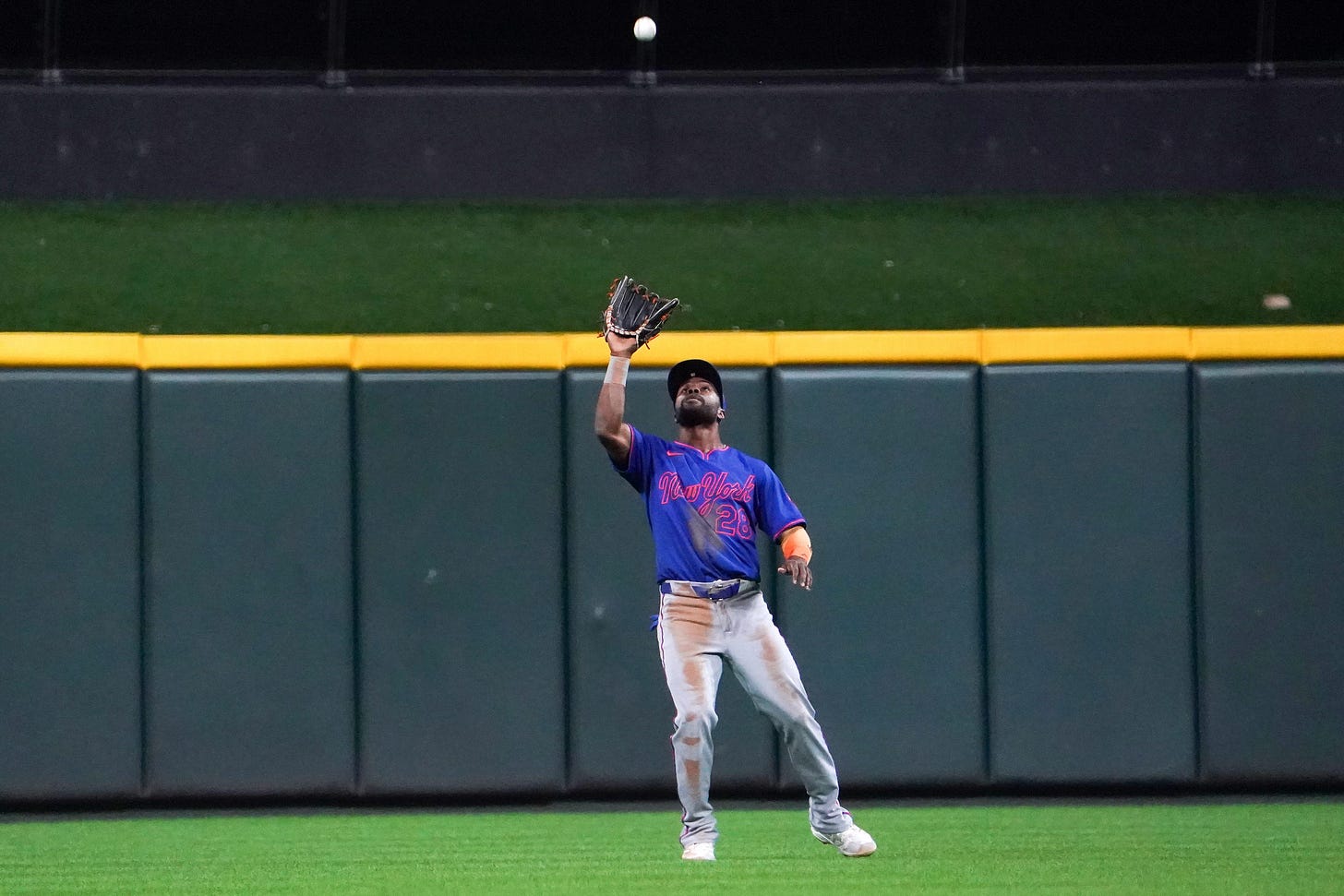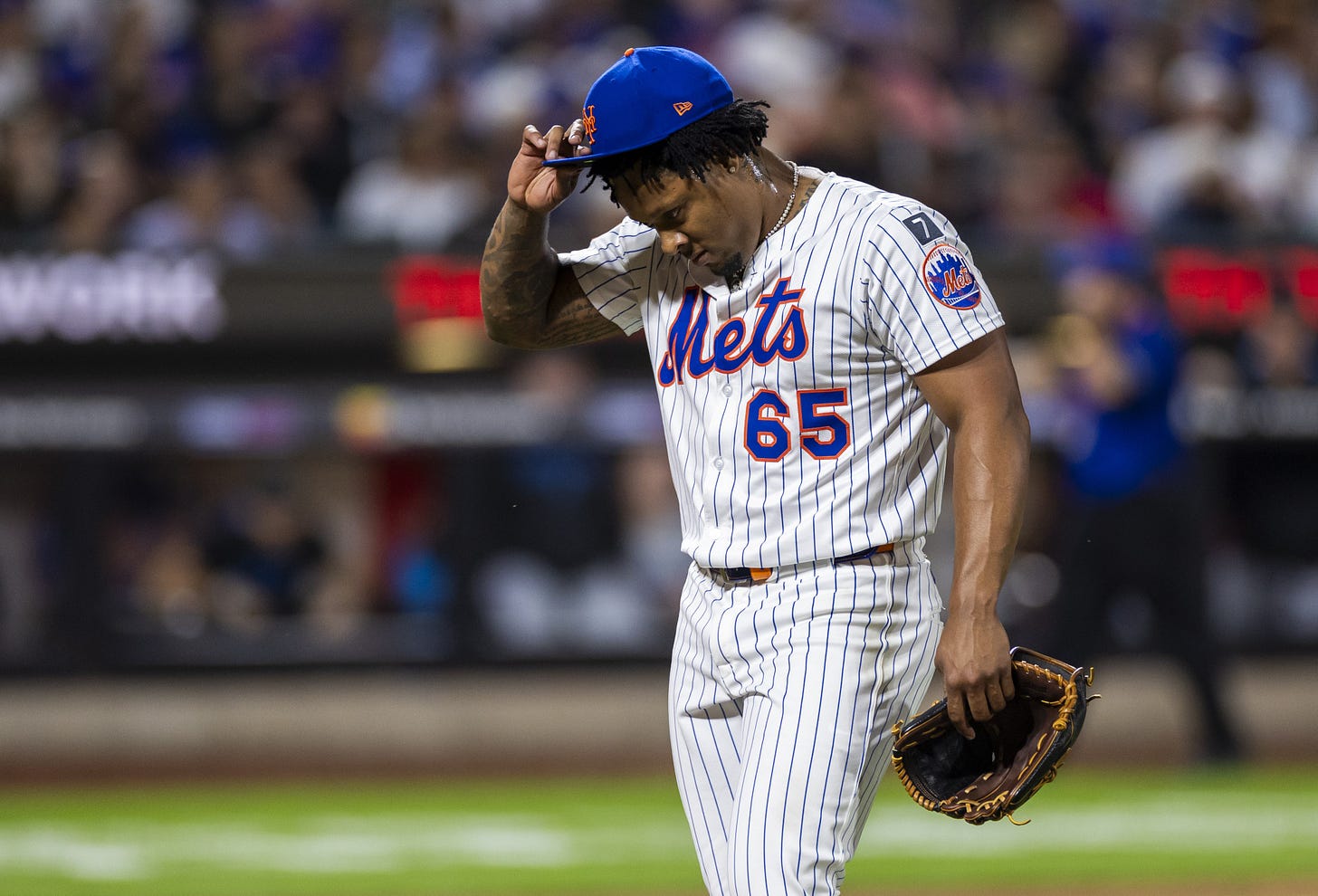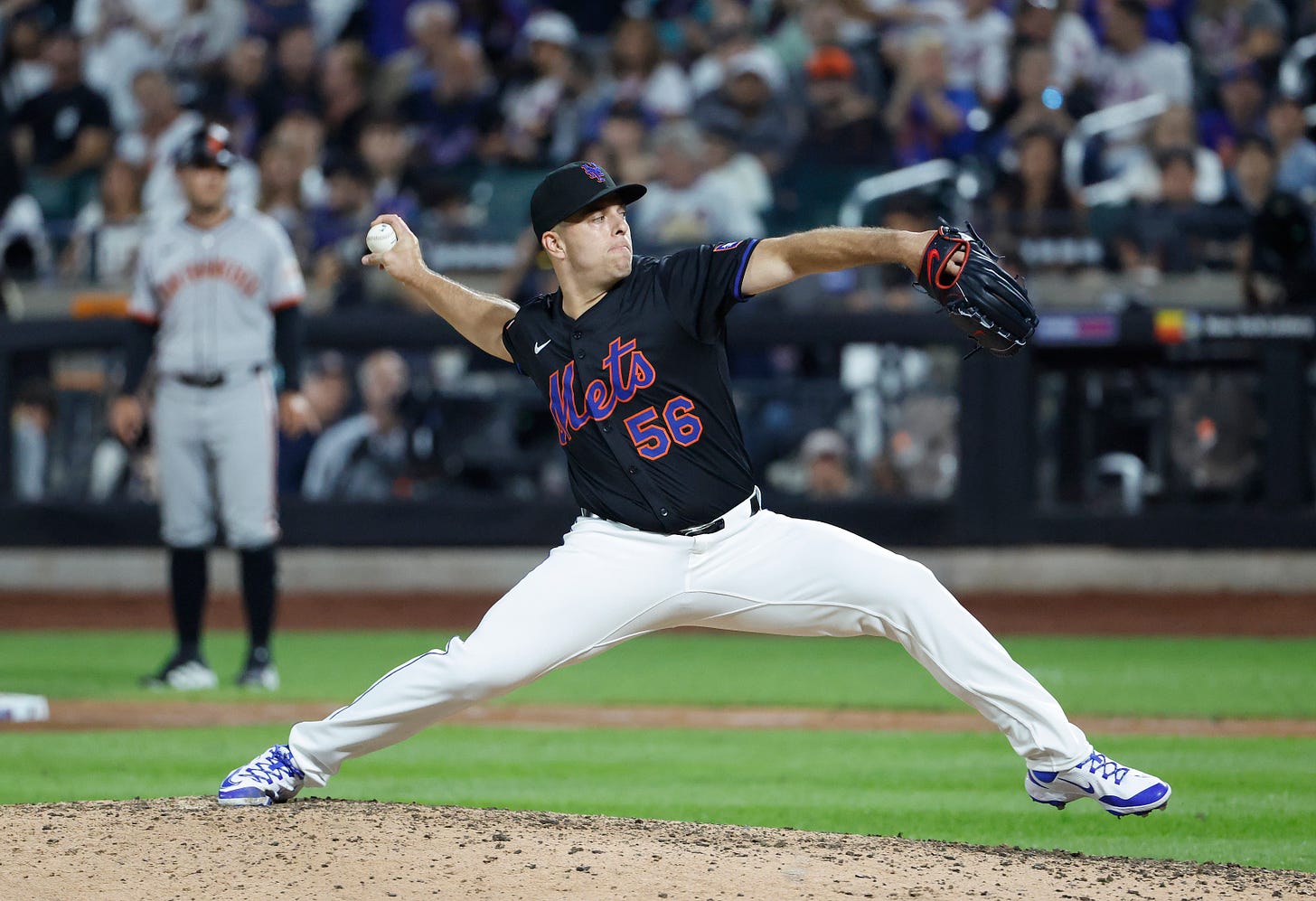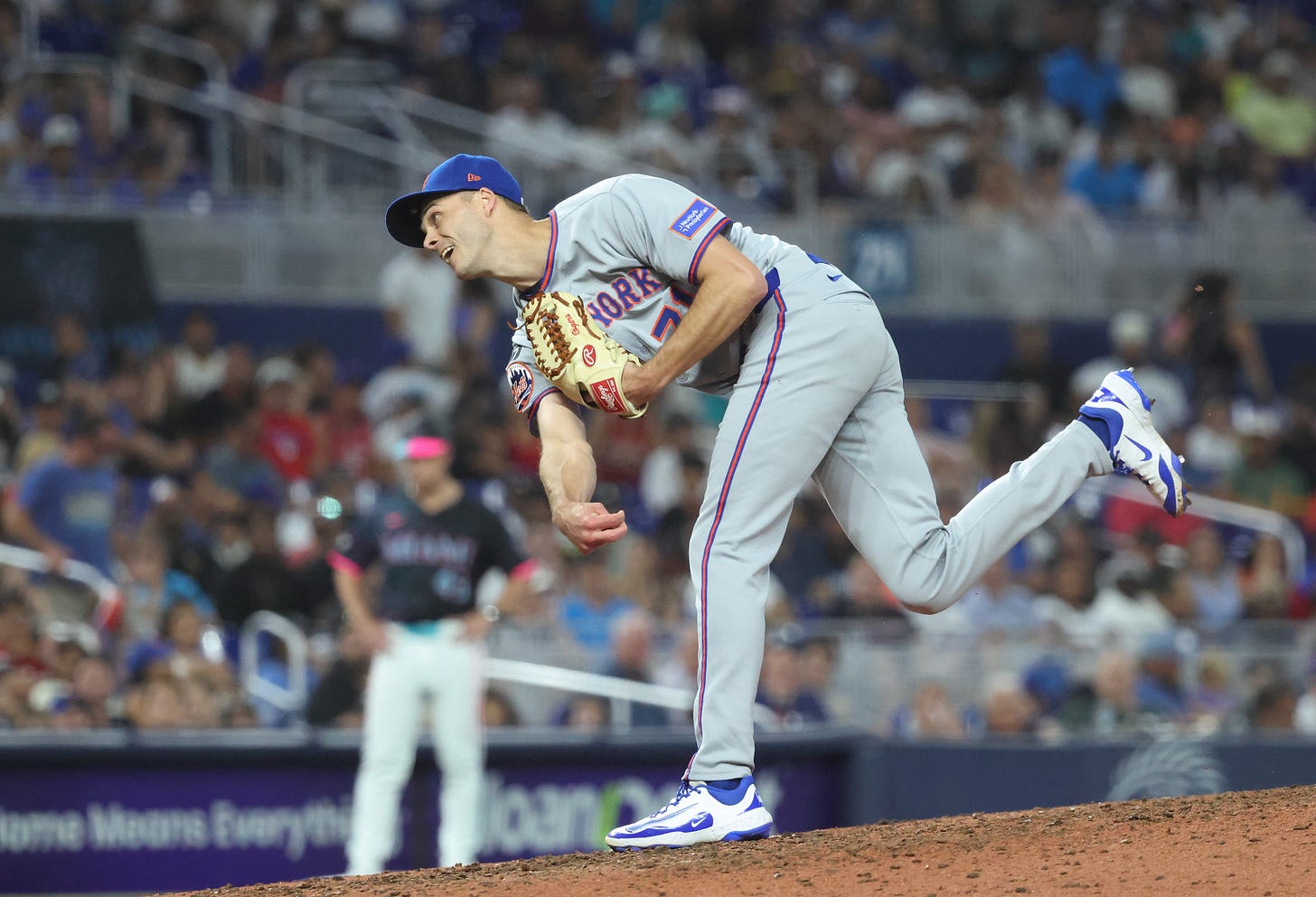How might the Mets trade deadline acquisitions fit for 2026?
The Mets made four major trades ahead of the trade deadline, and while most of them struggled, their talent is undeniable
The Mets made four major acquisitions ahead of the July 31 trade deadline in 2025, and almost none of them benefitted the Mets. In fact, David Stearns said after the season that the Mets became worse after the trade deadline.
But that doesn’t mean they didn’t acquire talent, or players that should have made them better then and could make them better going forward. As Stearns also said, they clearly didn’t do a good job positioning their new acquisitions for success, nor did they clearly create an environment conducive to success.
But there could still be fits for some of these players in 2026. Today, we will discuss each and how they might play into next season (or not).
CEDRIC MULLINS
Ahead of the trade deadline, the Mets were looking for a player to merely give them league-average production at the plate and not be a net negative defensively in center field, especially with the team already struggling defensively in the outfield and specifically in the corners with Brandon Nimmo’s below-average arm and Juan Soto’s generally below-average defense. There wasn’t a lot available, and there certainly wasn’t a lot available that fit the Mets’ needs as a rental, so the Mets opted for Cedric Mullins, who, at the time anyway, checked the boxes offensively.
To be fair to Mullins, he had a 106 OPS+ with 15 home runs and 19 doubles over 91 games with the Orioles before he came to the Mets. So again, it looked like the Mets were definitely getting an upgrade over Tyrone Taylor’s offense.
But the truth is, even at the time, it felt like the Mets were making a trade for the sake of making a trade and for a player who wasn’t going to make the Mets that much better. His defense was a concern when he arrived as well, although Stearns downplayed those problems in his post-deadline press conference.
Needless to say, this trade probably made the Mets worse.
Mullins gave the Mets a 62 OPS+ in 42 games. He made the outfield defense worse, teams were running all over his arm, and it got to a point that Mullins was unplayable. He lost playing time to José Siri once he returned from the injured list, and he proved to also be unplayable on both sides of the ball as well. Taylor ultimately got his job back once he returned from the injured list, and his defense alone in center field made the Mets better down the stretch.
Needless to say, if this wasn’t a fit on July 31, it isn’t a fit now, either.
The primary objective for the Mets this winter is getting better on the mound and getting better defensively. The Mets absolutely need a center fielder, but it’s clear that player will not be Mullins, who is probably a part-time player going into his free agency.
The market for center fielders will be thin, with Cody Bellinger, Harrison Bader and Trent Grisham as the headliners. The Mets know Bader, of course, and he could be a fit once again, but while Grisham had a big year offensively, it was a career year for him with the Yankees, and he was a mess defensively. Bellinger is one of the few players available who provide value on both sides of the ball and is a great fit, but park factor could play a role in whether or not he decides to stay with the Yankees.
Mullins made $8.725 million in his final year of arbitration.
GREGORY SOTO
Soto’s tenure with the Mets started off really well, and it looked like he was going to be the club’s answer to pair with Brooks Raley as a big power lefty in their bullpen down the stretch and into the playoffs. He allowed only seven baserunners over his first 8.1 IP with the Mets, all while the Mets pitching staff was hemorrhaging runs during the month of August.
But as the Mets became more reliant upon Soto and as they began to ramp up his usage, his effectiveness diminished, and as August rolled into September, it was Raley who became their ace lefty out of the bullpen.
Overall, Soto gave the Mets a strong month of August, holding opponents scoreless in 11 of his 12 appearances. He was less effective in September, holding opponents scoreless in six of his 11 appearances, and he allowed multiple runs in three of those, the lowlight coming in Game 160 when he lapsed and allowed the Marlins to run around the bases on him uncontested.
Even so, I’d chalk Soto’s September issues up to overuse and misuse to a large degree. He’s a quality left-handed reliever who, despite his struggles at the end, held left-handed hitters to a .549 OPS this past season and only four extra-base hits. But it’s unclear if there’s room for Soto on the 2026 roster. They will still have Raley next year, and they’ll have AJ Minter returning from lat surgery as well. It’s difficult for the Mets to count on Minter specifically given his recent injury problems between this lat and the hip in 2024, and that could open the door for a guy like Soto. But there probably isn’t a clear path here for Soto, and the Mets might not know what they need until later this winter as Minter progresses in his recovery.
Soto made $5.35 million in 2025 in his final year of arbitration.
RYAN HELSLEY
At the time of the trade, Helsley looked like the final piece of a bullpen built to win in October. He was intended to pair with Edwin Díaz as a brick wall in the eighth and ninth innings, an impossible layer for the opposition to crack. He arrived with a blazing fastball and dastardly breaking stuff, and a ton of fanfare and hype as well.
But needless to say, Helsley was one of those players Stearns was talking about that made the Mets worse after the deadline.
Between apparent pitch tipping, general ineffectiveness, and his confidence clearly being shaken, Helsley destroyed the Mets bullpen and was a key reason why the Mets missed the playoffs in 2025. He allowed 25 hits, 11 walks, 16 earned runs, and four home runs in 20 innings over 22 appearances for the Mets. He was un-pitchable at one point for the Mets, and looked completely lost out there in the process.
He got absolutely crushed, and his 100+ mph fastball looked like 85 mph with the way the opposition was swinging against him.
One underdiscussed issue for Helsley too was the fact that he was pitching out of his customary role with the Mets. Helsley had been a textbook closer for the Cardinals throughout his career, and he led the league with 49 saves just one year ago, all while pitching to a 2.04 ERA. Not only was he moved into a new role, but a new environment in the cauldron of New York as well. But here, he had a 7.20 ERA. He did pitch quite well over his final six appearances, striking out six with three walks and three hits allowed over seven innings over his final six appearances. But by then, the damage was done to Helsley and the Mets.
As for what’s next, Helsley’s stock is obviously way down right now. But he will still likely be at the top of the closers market this winter given his track record. It would be unfair to him for clubs to forget his credentials and his overall stuff, despite what happened down the stretch in 2025. The questions, of course, are, does he have the makeup to thrive here, and would the Mets consider Helsley for that role if Díaz leaves?
I certainly don’t see the Mets entertaining Helsley as anything other than a closer, and that would only be if the Mets can’t retain Díaz.
Helsley made $8.2 million in his final year of arbitration.
TYLER ROGERS
If there’s an easy fit for the Mets to consider among their four major deadline acquisitions, it’s Tyler Rogers. He was excellent for the Mets upon arriving with his deceptive submarine delivery and his ability to induce weak contact, especially against right-handed hitters.
Rogers had a 61.6 ground ball rate this season, which is just insane. His 33.1 hard hit rate and 2.1 barrel rate were also absurd as well. He throws strikes, and he’s just difficult to pick up, which has made him one of the best relievers in the game over the course of his career. He has led the league in appearances four times in his career, and pitched in a career-high 81 games in 2025.
He didn’t pitch to the level he did while with the Giants before he came over, but he wasn’t too far off from those marks. He also showed he performed better in clean innings, but that was a function of other relievers not pitching particularly well and Carlos Mendoza simply needing Rogers to answer the call (his FIP wouldn’t indicate it, but I’d still bet on it). He also might’ve been victimized by the Mets’ poor defense, which contributed to some inflation in his ERA. But, he did have a 2.30 ERA with the Mets, so there’s really no complaints about his performance.
Rogers will be 35 next year, so the only issue might be his usage going forward. Teams will have to ease up on the throttle with Rogers in all probability, especially since he seems to thrive more when starting an inning, which in turn means he needs to pitch full innings in order to maximize his output.
If he’s interested, Rogers is certainly an avenue for the Mets to pursue as they reimagine their bullpen during the off-season. But he’s probably in the $10-13 million range and a 2-3 year contract, so it’s not a slam dunk considering the club’s other needs, although they need relievers for sure.
Rogers made $5.25 million in his final year of arbitration.







Can you please explain what Stearns meant by positioning the new trade acquisitions for success.I didn’t understand when he said it at the presser and I still don’t understand it today.
When Rogers starts getting tattoed, then I would worry. Otherwise re-sign the guy. Most of the hits I remember when doinks that dropped in, not rockets to the gaps. Soto needs to read the sentence "It does not matter how hard Ball 4 is" 100 times a day. And yes, keep three lefties. They are all post 30, and at least one will spend some time on the DL. Besides, with a 42 man bullpen (or how ever many they are now using), there is room for him. Need a coaching staff that needs to know how to handle a bullpen.